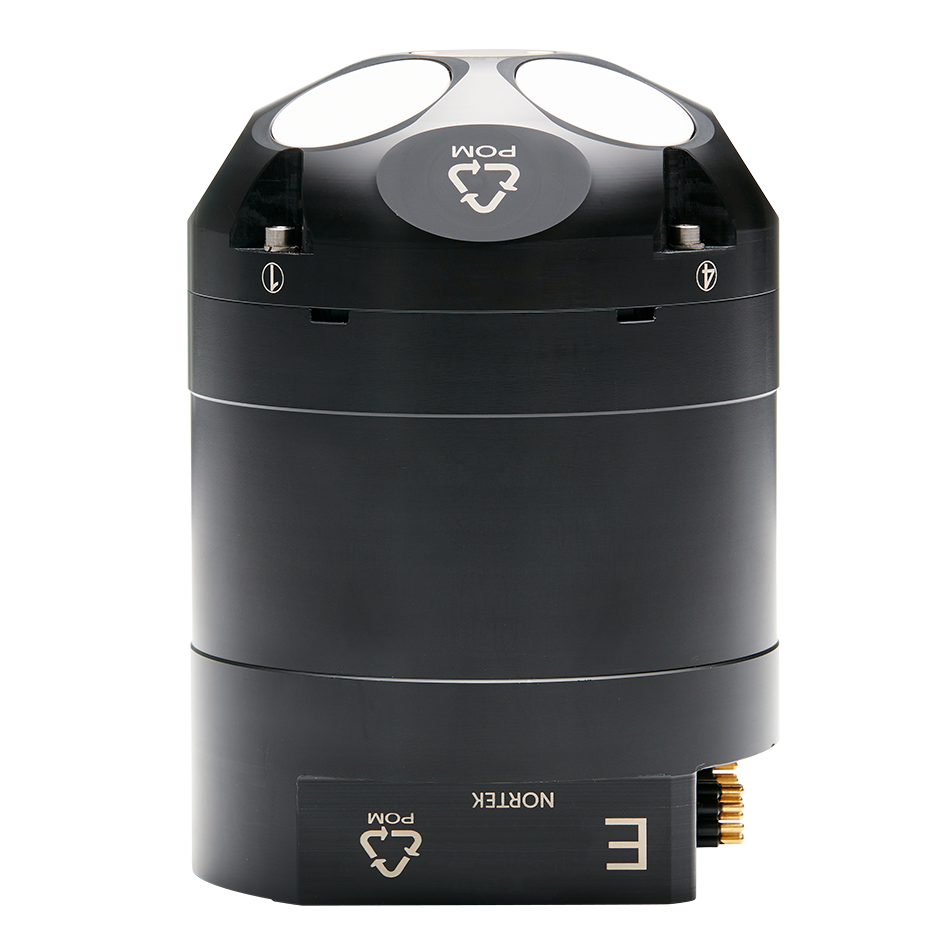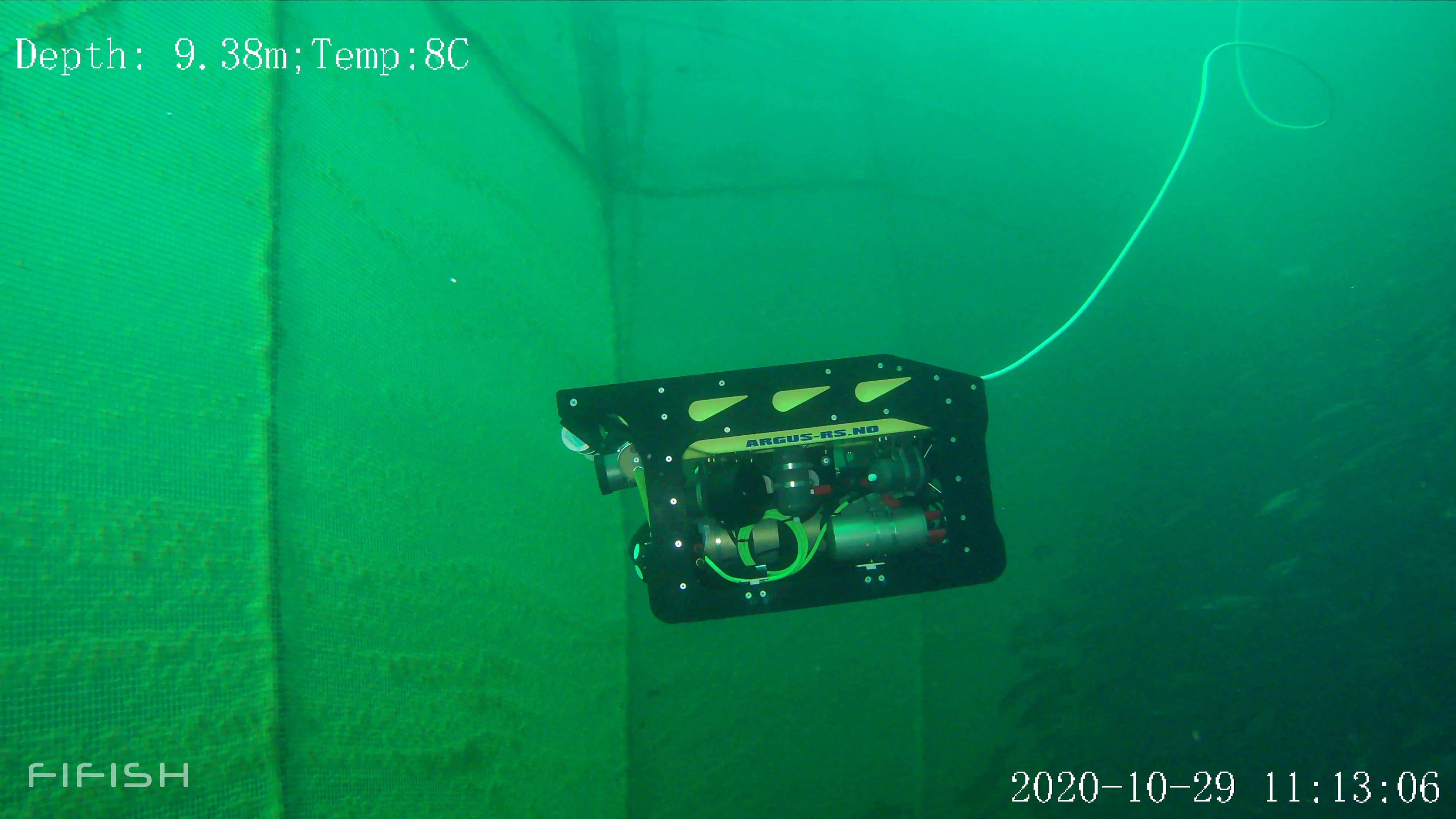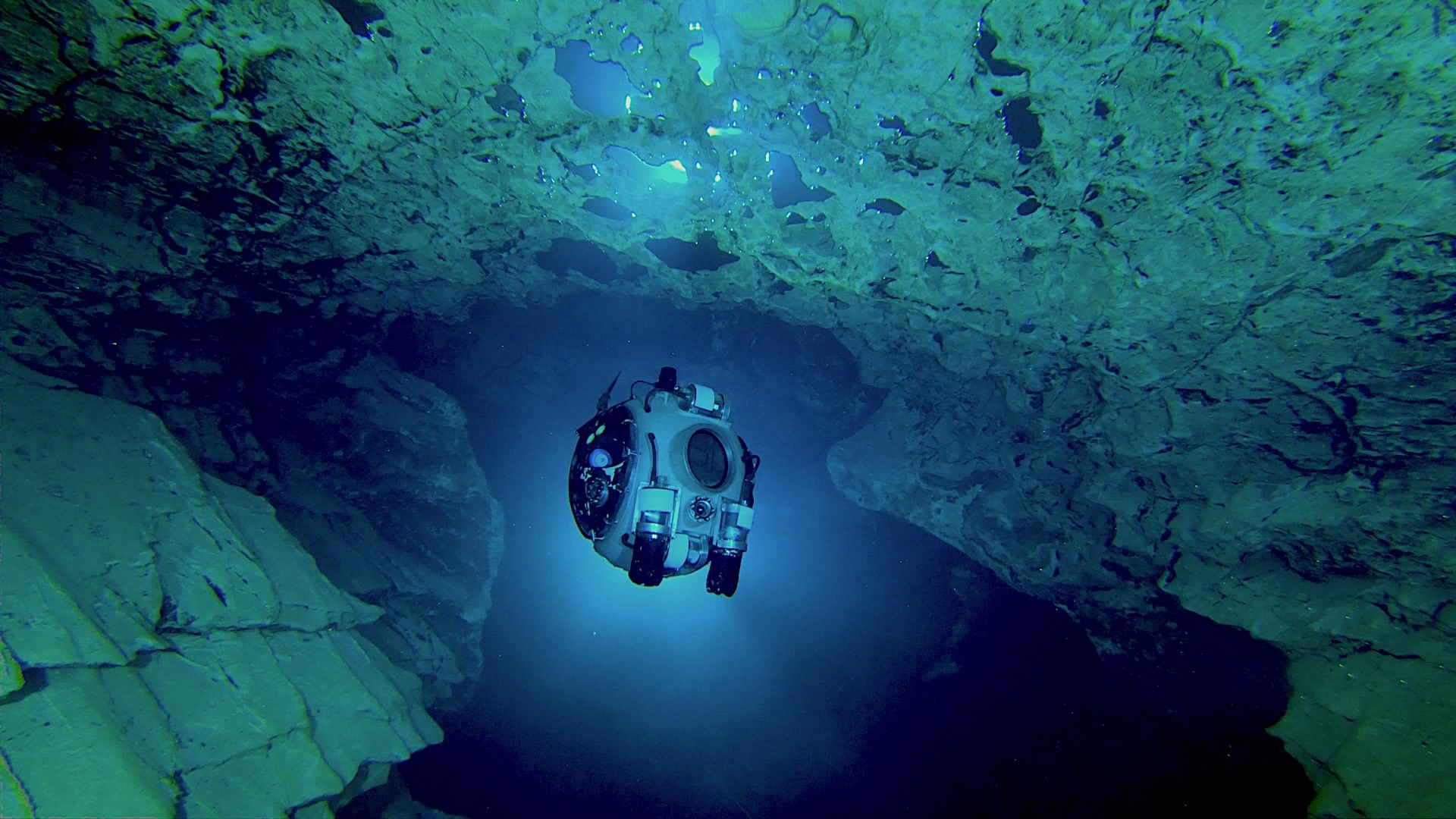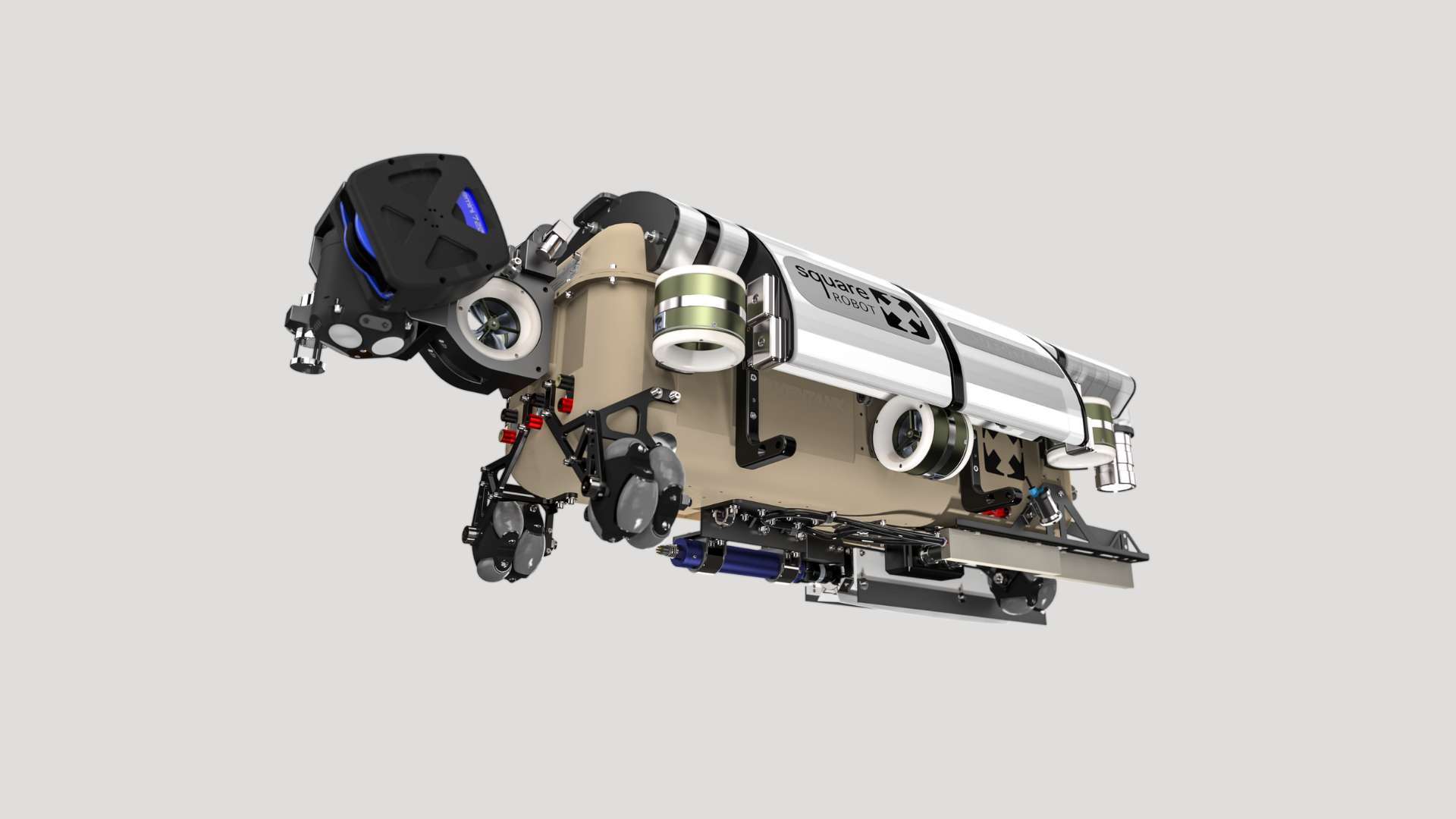
A DVL that brings navigation accuracy to tank inspection robots in a harsh environment
- User stories
Synopsis
Challenge
To conduct petroleum tank inspections, SquareRobot’s vehicle needed to reliably locate itself within a harsh closed environment.
Solution
SquareRobot selected a Nortek DVL 1000 due to its superior navigation performance close to boundaries and the support provided by Nortek’s engineers.
Benefit
Square Robot uses the DVL to navigate the vehicle at 20 cm above the tank floor and reliably report position information for areas of concern.
Nortek’s Doppler velocity logs (DVLs) are already established as industry-leading instruments for velocity calculations in subsea applications. But pioneering Boston-based company Square Robot has now successfully deployed them in a very different and challenging environment.
Square Robot is helping to change the face of the oil and gas industry through its development of an innovative robot that can provide detailed assessments of the conditions in above-ground petroleum storage tanks.
Using the robot eliminates the need to empty the tanks to perform an out-of-service inspection – a costly, time-consuming and potentially hazardous procedure still used in most tank assessments.
Founded in 2016, the company took just two years to design and build a highly robust autonomous robot certified to operate in these hazardous environments. As of 2022, Square Robot has performed nearly 100 in-service tank inspections across the globe for leading firms in the petrochemical, power generation, transportation and other fields.
Robust autonomous robot for fuel storage tank inspections
The robots are highly robust, autonomous vehicles outfitted with sensors and hardware that make them compatible with various petrochemicals.
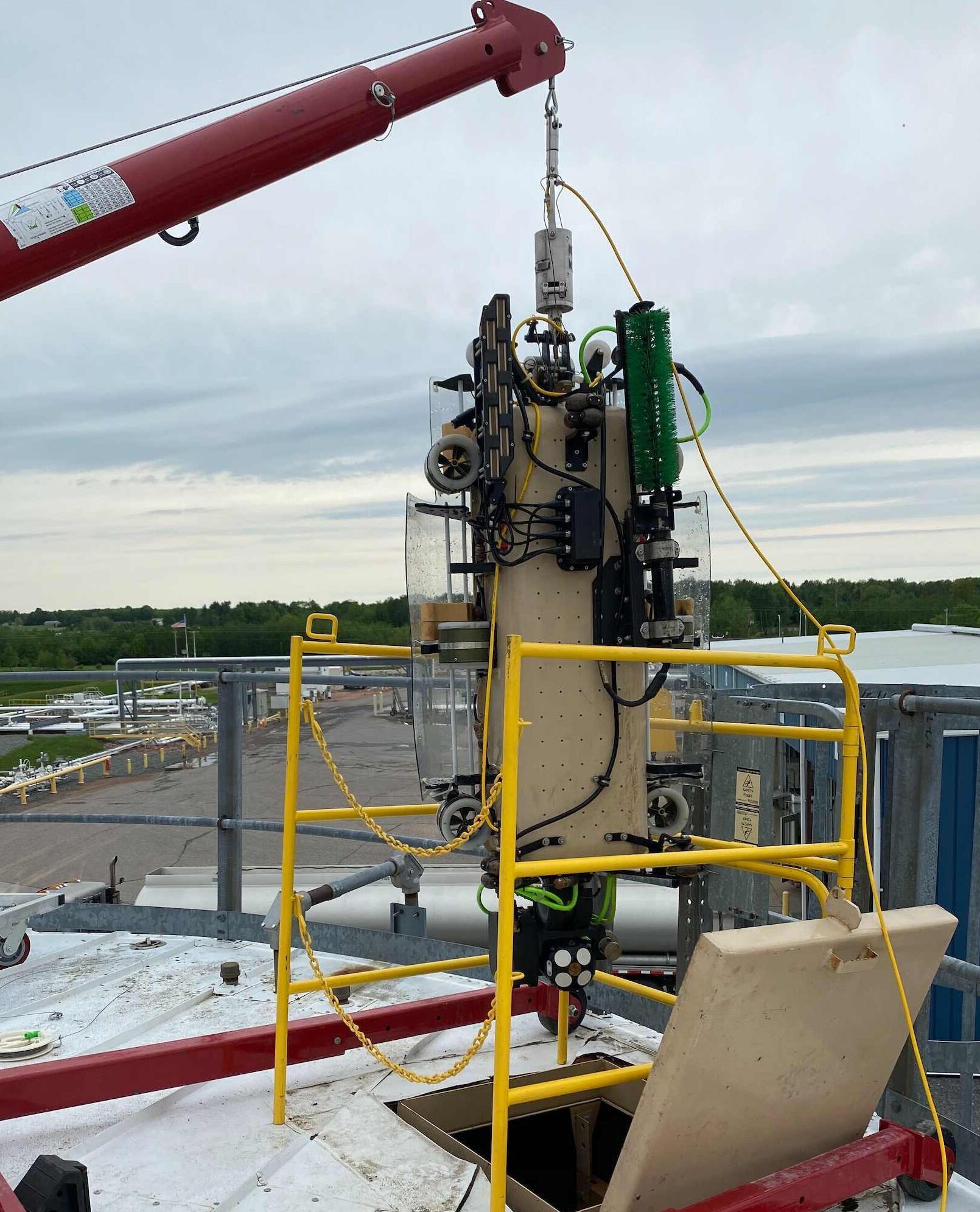
The robot is then able to navigate through the liquid-filled tank – typically gasoline or diesel – to detect damage such as corrosion on the tank floor. The tanks, a familiar sight for many, are typically 10–30 m tall and 15–80 m in diameter.
“The robot essentially performs a floor inspection of the tank that would otherwise have to be done by a human,” says Amy Underwood, Senior Roboticist at Square Robot.
“During a traditional out-of-service inspection, the tank is emptied, cleaned to make it safe for entry, then inspected by personnel. All of this downtime means a significant loss of revenue for the tank owner. Our robot gets rid of all that – your tank is still in service and full of product,” she says.
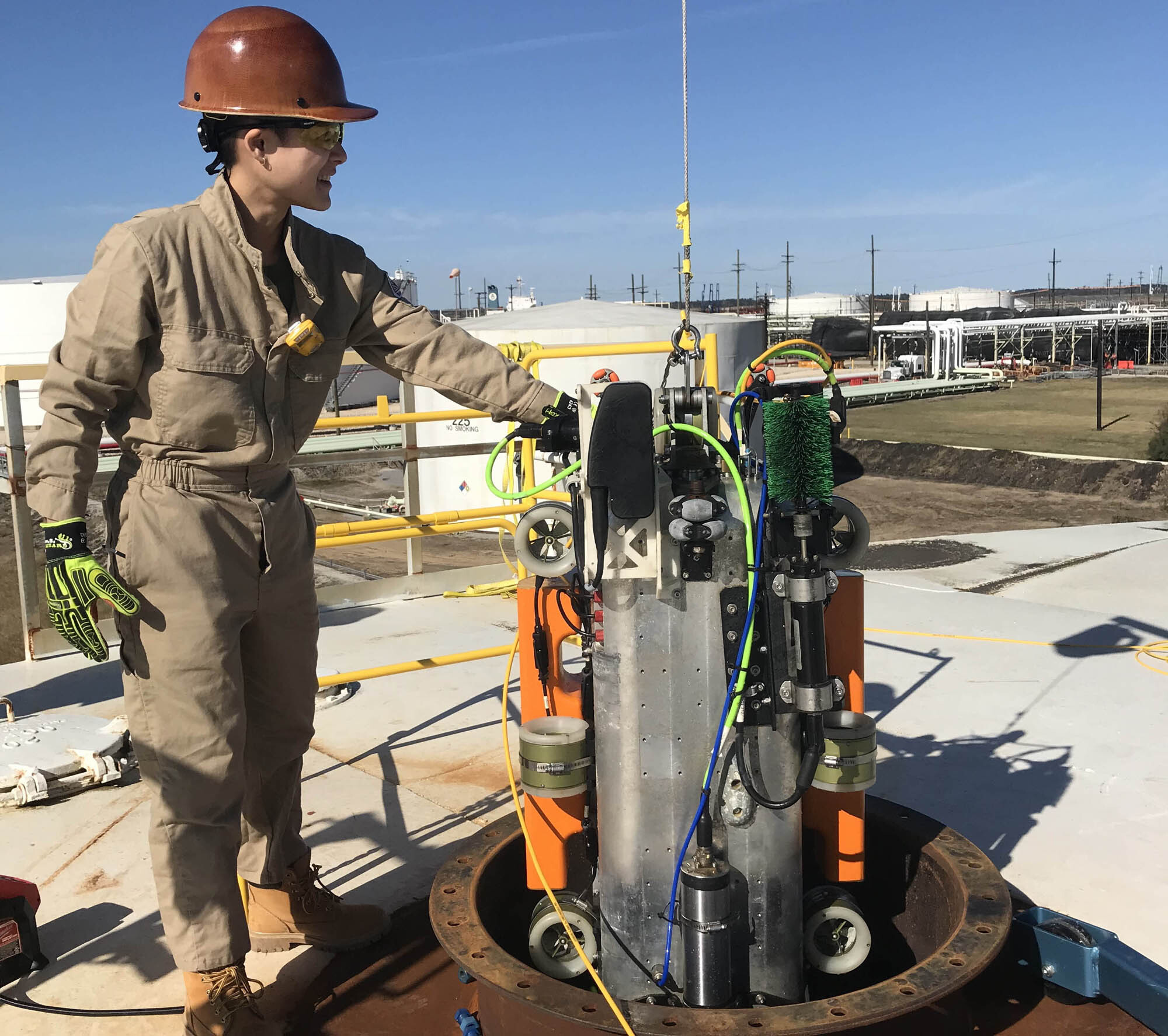
The vehicle carries out tests in a way that won’t damage the tank – so-called non-destructive testing (NDT). One of the principal NDT methods is ultrasonic testing (UT), which can characterize the thickness and internal structure of a surface using high-frequency sound waves. Applied to a tank floor, UT can reveal potential weak spots created by corrosion, for example.
The robots are capable of hovering, unlike the alternative “crawler” robots sometimes deployed to move across tank floors to do basic inspections. This means the Square Robot can avoid any obstacles on the floor, and also carry out high-definition visual inspections of a tank’s shell using on-board cameras.
Highly accurate velocity measurement for precise positioning of robot
But in order to precisely examine and map areas of concern, the robot needs to know exactly where it is in the tank. That requires highly accurate velocity measurement to aid navigation in a critical way – neither of which is straightforward in an enclosed tank full of liquid product.
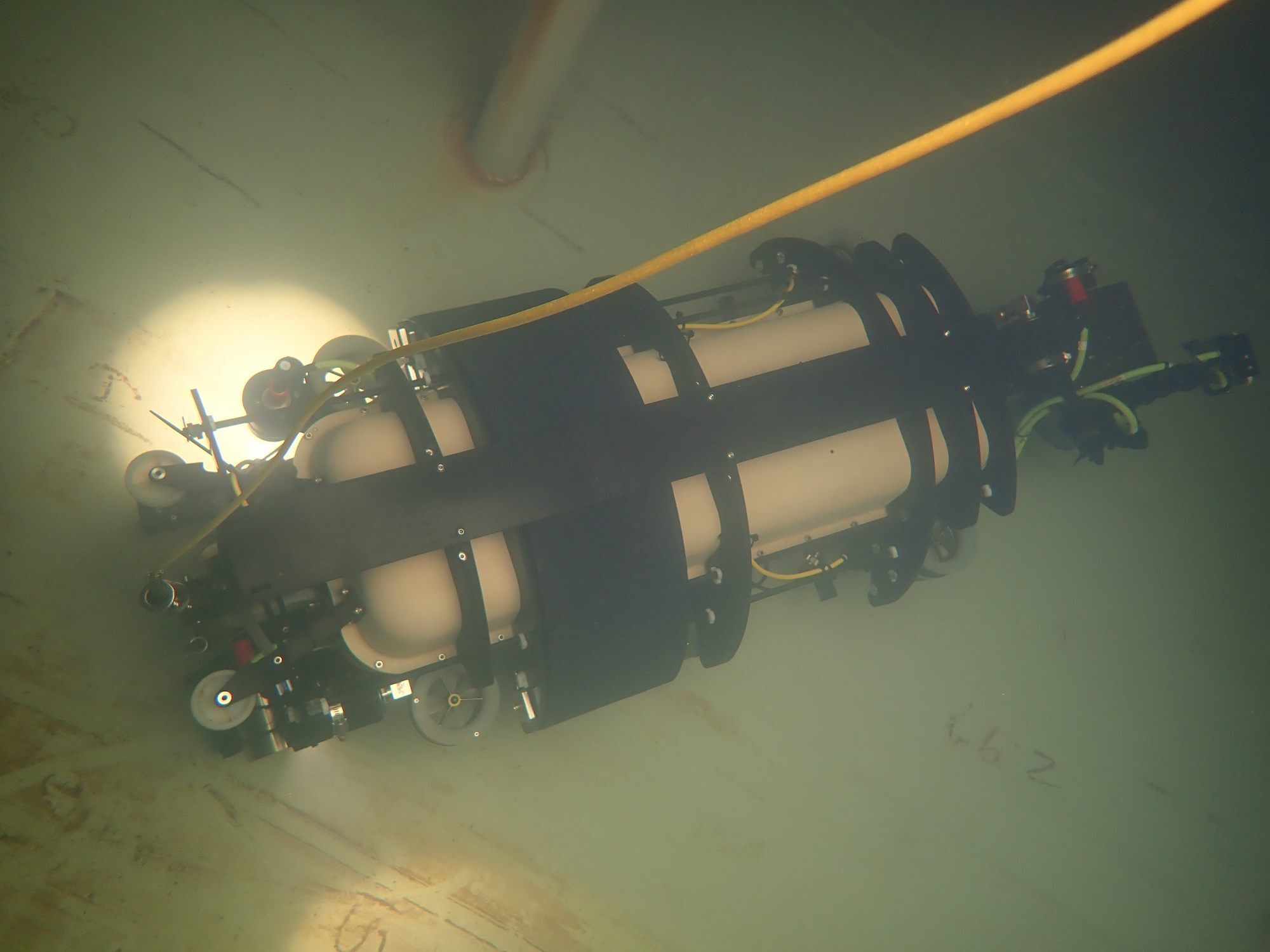

A DVL operating accurately at even smaller distances from the floor
While the Nortek DVL already works closer to a surface than many other instruments on the market, Square Robot is looking forward to technological advances now being rolled out by Nortek, which will enable it to operate accurately at even smaller distances from the floor.
Meanwhile, Square Robot is continuing to expand its operations by continually performing compatibility reports for different products.
The company’s five models of the robot have differing, customizable payloads, which could be adapted for a number of uses, including subsea inspection and in the shipping industry.
“Our main focus has been in diesel, but as our customers are bringing new product challenges our way, we are constantly expanding our capabilities to meet the global demand,” says Underwood.
The successful use of the DVL in this novel environment is further evidence of the accuracy, reliability and versatility of one of Nortek’s most popular and recognized technologies.
To solve the problem, the company looked to its roots in the subsea industry. Square Robot’s founders and several other team members previously worked at a leading AUV developer and have had long careers in the subsea industry. So, they already knew what worked well for velocity measurement in the ocean and wondered whether it could be made to work in the harsh environment of a storage tank.
“We needed high navigational accuracy, and knew DVLs could provide this from our background in subsea,” says Underwood.
DVLs use the Doppler effect to calculate velocity by measuring the shift in wavelength between acoustic pulses transmitted to and reflected back from particles in a liquid or a surface such as a seabed.
There is more on how the DVLs are used in navigation in this in-depth guide
The team were familiar with Nortek’s Doppler velocity logs, which had a reputation for being highly accurate, reliable and straightforward to use for underwater navigation, as well as offering the compact form needed to fit into the restricted space of the robot.
Crucially, Nortek’s 1 MHz DVL 1000, the instrument Square Robot decided on, could operate accurately at a distance of only around 20 cm from a given surface – often the seabed, but in this case the tank bottom. That is closer to the floor than many other DVLs on the market are capable of operating accurately, and a prerequisite for the inspection vehicle to do its job properly.
The fact that this DVL performs so well in such a difficult environment can be attributed to Nortek’s proprietary bottom-tracking algorithm.
Collaborative approach lays the foundation for technological innovation
But, while DVLs had proven their worth in the ocean, Square Robot was uncertain whether they would work accurately within the confines of a steel tank, the sides of which have very different acoustic properties from a typical subsea environment.
“Using a DVL in our operating environment is unique, so it provided some challenges for Nortek. Due to the construction of the tanks and the products being more structurally complex than water, the noise levels are dramatically increased,” said Underwood.
The Square Robot team say they have been very happy with the fruits of the relationship, which has been enhanced by the close proximity of the Square Robot and Nortek offices in Boston’s port area.
“It’s really nice to have a vendor where you can just pick up the phone when you have a problem and get an instant response,” says Underwood.
Fine-tuning the DVL for a harsh and challenging environment
The DVL 1000 needs to be mounted in such a way that its beams are not blocked by other parts of the robot when working close to the tank floor, so its compact form was a major asset. The team also determined that there was no need to house the Nortek DVL in any extra protective casing, as it was made from materials that were compatible with the various fluids in which the robot operates.
The DVL 1000 was tested at various heights, with adjustments made to reduce the amount of noise produced by the steel surfaces of a tank in measurements.
“We were able to tune the DVL to get the functionality we need. By adjusting the “Transmit Power” setting of the DVL, we don’t use as much power out as you would use for subsea application, which helps reduce noise,”Underwood says.
The team was also able to make the necessary adjustments to compensate for the differing density and acoustic characteristics of the fluids in which they were operating.
The flexibility and ease of use of Nortek’s software was also a plus. “Nortek has a lot of different protocols to help software integration. We started with one we were comfortable with, but eventually we migrated to Nortek’s native messaging system, due to its ease of use,” says Underwood.
